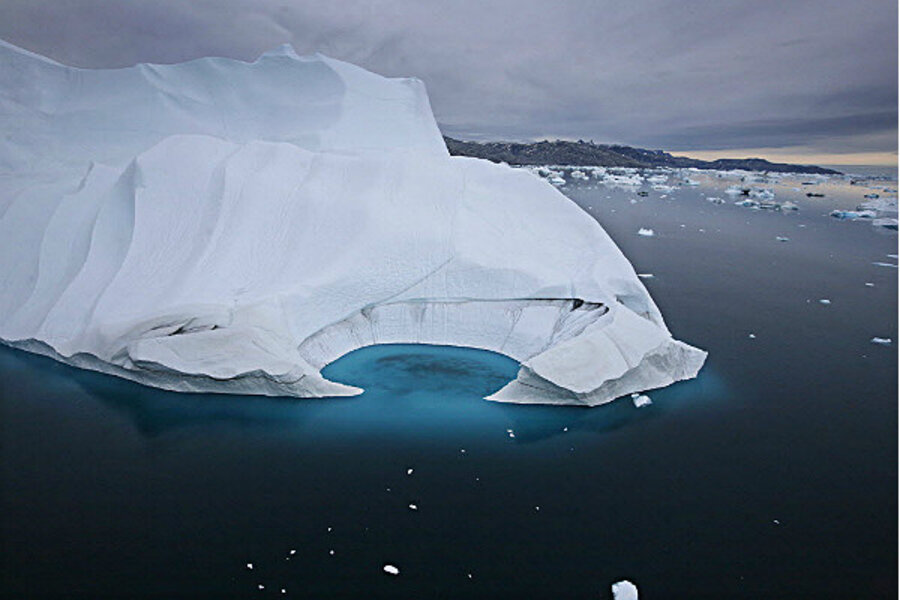Monstrous iceberg breaks free of Greenland glacier. Is climate change to blame?
| Washington
An iceberg twice the size of Manhattan broke free from Greenland's massive Petermann Glacier, which could speed up the march of ice into northern waters, scientists said on Wednesday.
This is the second time in less than two years that the Petermann Glacier has calved a monstrous ice island. In 2010, it unleashed another massive ice chunk into the sea.
The latest break was observed by NASA's Aqua satellite, which passes over the North Pole several times a day, and was noted by Trudy Wohlleben of the Canadian Ice Service.
"At this time of year, we're always watching the Petermann Glacier," Wohlleben said, because it can spawn big icebergs that invade North Atlantic shipping lanes or imperil oil platforms in the Grand Banks off Newfoundland. A large piece of the 2010 iceberg did just that, but caused no damage, she said by telephone.
NASA images showed the iceberg calving -- breaking off from a floating river of ice called an ice tongue, part of the land-anchored Petermann Glacier -- and moving downstream along a fjord on Greenland's northwest coast. A rift in the ice had been identified in 2001, but on Monday a crack was evident.
On Tuesday, the satellite spied a bigger gap between the glacier and the iceberg, and the ice chunks further downstream were breaking up, NASA said.
"The floating extension (of the glacier) is breaking apart," Eric Rignot of NASA's Jet Propulsion Laboratory said in a statement. "It is not a collapse, but it is certainly a significant event."
One difference between the 2010 event and this one is that the present ice island broke off further upstream, where the ice was right up against the fjord's rocky side walls, effectively damming the glacier's seaward movement.
"This piece that has been much further back, may have actually been providing more of a frictional force to cork (the glacier) up than the piece that broke off in 2010, which was much further out," said Andreas Muenchow, an Arctic oceanographer at the University of Delaware.
The 2010 break accelerated the Petermann Glacier's movement toward the sea by 10 percent to 20 percent, Muenchow said by telephone. The current break could have a greater effect on the glacier's movement.
Coastal glaciers like this floating ice tongue tend to block the ice flow headed for the sea. When ice chunks break loose, the land-based glaciers behind them often move more quickly, Muenchow said.
The accelerated movement of the Petermann Glacier after the 2010 break was "noticeable but not dramatic," he said on his website http://icyseas.org .
The movement of this huge amount of ice into open water will have no immediate impact on sea levels, since this ice was already part of an ice shelf that was attached to land but extended over water, just as a melting ice cube in a glass of water does not raise the level of water in the glass.
Muenchow said climate change was a factor in the current state of the Petermann Glacier. He said this glacier is as far back toward the land as it has been since the start of the Industrial Revolution more than 150 years ago.
(Editing by Marilyn W. Thompson and Stacey Joyce)






